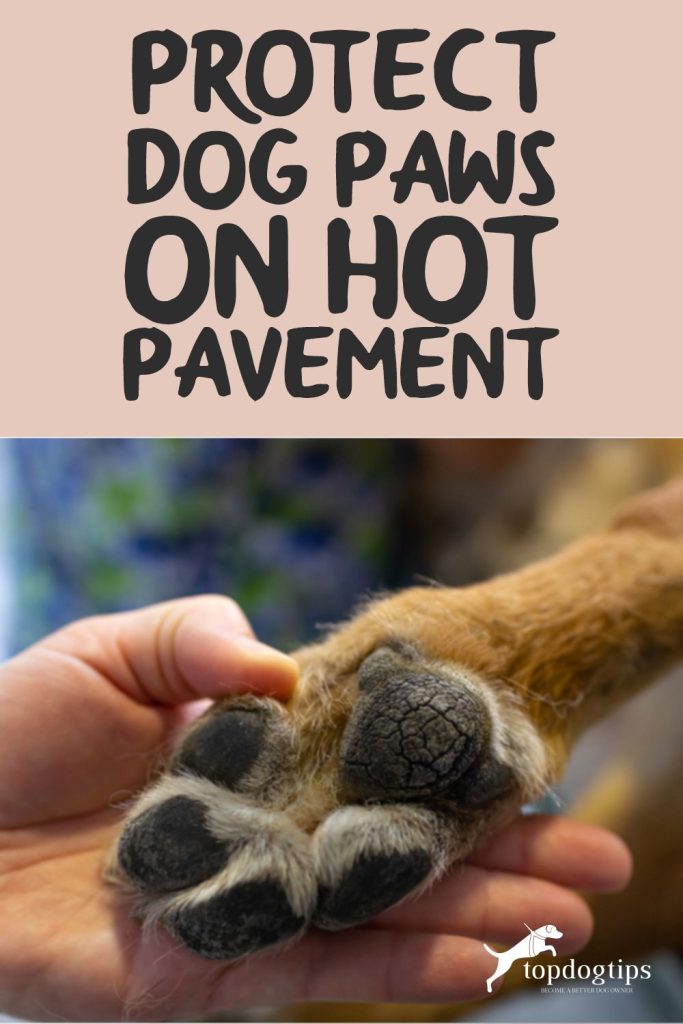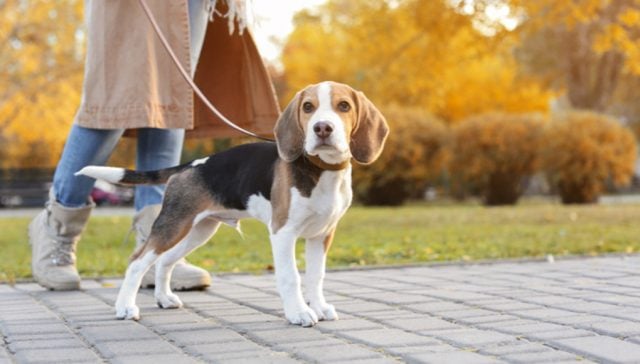
Table of Contents
- The Anatomy of Dog Paws
- Can a Hot Pavement Burn Your Dog's Paws?
- Tips On How to Protect Dog Paws on Hot Pavement
- 1. Go on a Walk When the Pavement is Cool
- 2. Stick to the Grass and Shady Areas
- 3. Moisturize Dog Paws Before Walking on Hot Pavements
- 4. Try Using Paw Wax During Hot Weather
- 5. Protect Paws from Hot Pavements With Dog Shoes
- 6. Use All-Terrain Dog Boots When Necessary
- 7. Utilize Peel And Stick Pads
- 8. Invest in a Fido Stroller To Protect Dog Paws
- 9. Wear Dog Socks As An Alternative to Protect Their Paws
- 10. Toughen Their Paws on Cold Pavements
- 11. Consider having dog shoe suspenders
- How To Tell If Your Dog's Paws Are Burnt After Walking on a Hot Pavement
- First Aid for Burned Dog Paws Due to Hot Pavement
- Final Thoughts About Protecting Dog Paws
Unlike humans, canines don't wear slippers. So, how can you protect dog paws from the scorching heat of hot pavement?
If you live in a concrete jungle with no shade from trees, walking outdoors with your pup can be challenging.
Their paws aren't as sensitive as our hands, but they're not immune to heat either.
So, if you want to:
- Protect dog paws from burning on hot pavement
- Know the symptoms if their paws are hurting
- Provide first aid in case their feet get burnt
You'll love the actionable tips we're sharing in this article.
But before we reveal the hacks, let's talk about dog paws first and how heat can affect them.
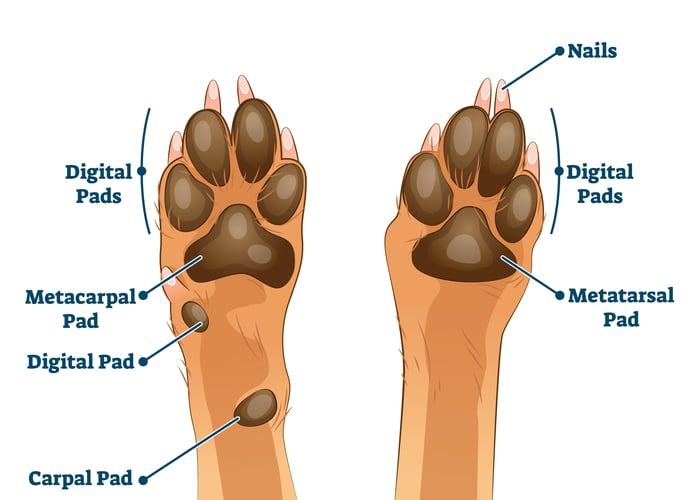
The Anatomy of Dog Paws
Dog's feet have fur coverings that protect them, but there's a part that's not covered with the fur — their paw pads.
The role of a paw pad is to cushion their feet from rough surfaces and provide shock absorption and traction.
However, they're not burn-resistant.
Dog paws are made up of five components.
Claws
These arched structures located at every single toe help catch and hold prey.
The claws of a dog are pretty powerful, and they aid in obtaining foot stability.
Additionally, they assist the dog when running, maneuvering, and digging, and providing some protection.
Digital Pads
These paw pads are the ones that support and accommodate every toe.
When walking or sprinting, the digital pads and metacarpal pad support most of a dog's weight.
These pads are necessary for absorbing the weight of a dog's body, which relieves stress on the bones and joints.
Metacarpal& Metatarsal Pads
Metacarpal pads are the most prominent paw pads at the front of their bodies, whereas metatarsal pads are the largest in the back.
Although paw pads have a thick layer of fatty tissue, your dog might still be injured by stepping on a surface that is excessively hot or cold.
Dewclaw
The extra toe on the inside of a dog's front leg is known as a dewclaw.
Its position is similar to that of the thumb in humans, but they differ in mobility or functions.
They don't give much traction or digging function.
However, they help the dog acquire a firmer grasp on bones and other items they might chew.
But not all dogs have dewclaw.
Carpal Pad
Carpal pads emerge on a dog's legs just above the front paws.
The carpal pads are positioned directly above the dewclaws if your dog breed has them.
Carpal pads aren't always present on every dog's hind legs, but most fidos have them on their front legs.
The primary function of the carpal pad is to allow a dog to apply the brakes if necessary while sprinting around or down a slope.
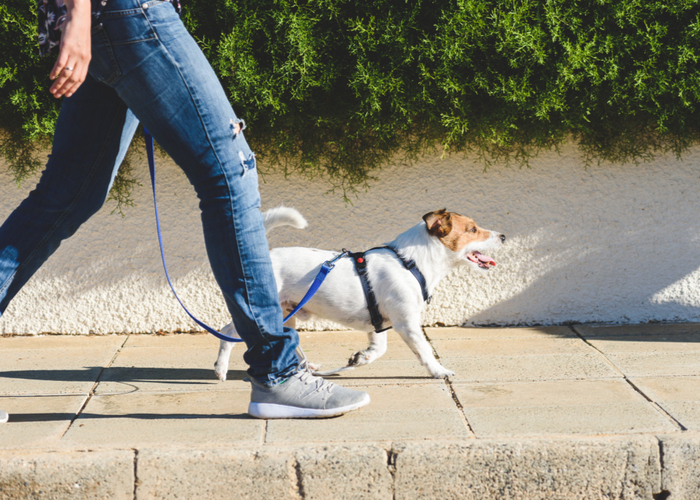
Can a Hot Pavement Burn Your Dog's Paws?
Cities covered with concrete are hard to walk in during midday or late afternoon, especially if the ground is made of asphalt.
It's a durable yet flexible material.
However, asphalt temperature can be 40 to 60 degrees hotter than air temperature when in direct sunlight with no wind and low humidity.
It just takes 60 seconds for a dog's paw to burn on a 125-degree pavement.
Therefore, even if the outdoor temperature is only 77 degrees F, the pavement could be hot enough to burn a dog's feet if it walks on it for long enough.
So, when is it safe to walk your pup on hot pavement?
Having a temperature gun can help you know when to point it to the pavement to know its temperature.
If it's 76 degrees F or cooler, then you have nothing to worry about, for it's comfortable to walk on it.
However, you can't just bring your temperature gun every time you go out for a walk.
But vets in the US have a simple tip to know how hot the pavement is.
The rule of thumb is to try touching the pavement for 10 seconds.
If you struggle to hold it down, that means it's too hot enough for your fido to walk on them.
Tips On How to Protect Dog Paws on Hot Pavement
Humans can barely walk on hot pavements, so it's expected that it's going to be tough for dogs, too.
If you want to keep your Fido's paws protected from burns and injuries, following these tips can help you.
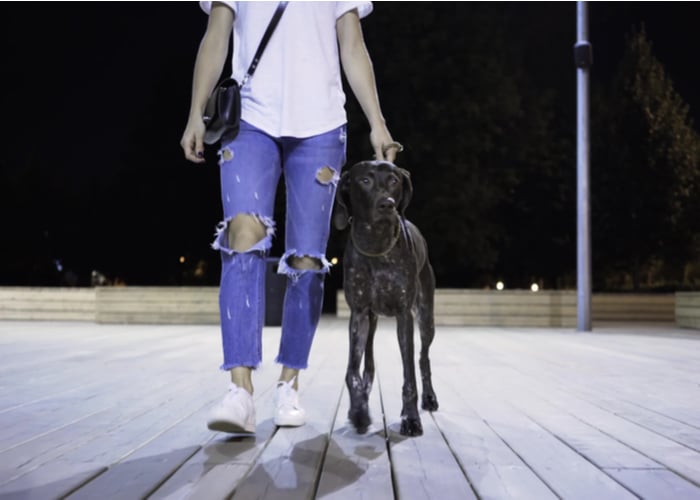
1. Go on a Walk When the Pavement is Cool
It's a given that dogs need a walk as an exercise to keep their body healthy and strong.
However, you have to be mindful of when and where to walk to avoid hurting him and his paws.
The best time to go out and walk is when the pavement is cool, preferably in the morning or late evening.
Avoid walking your fido in the afternoon or early evening at all costs where the sun's high and the pavement will be scorching.
Aside from burning their paws, brachycephalic dog breeds may also suffer from heat strokes.
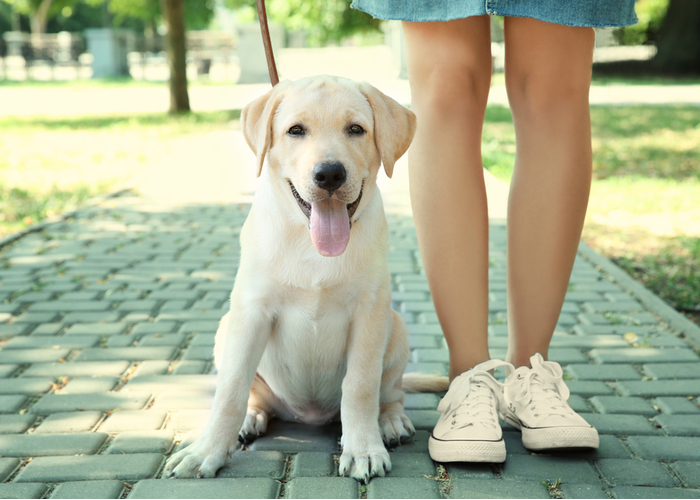
2. Stick to the Grass and Shady Areas
If you need to walk your dog when it's still hot outside, stay on the grass or in shady locations.
That way, you can avoid heated surfaces such as concrete and asphalt and burning their feet.
So, look for a shady park where your dog can relax and bring some water if they become thirsty or appear dehydrated.
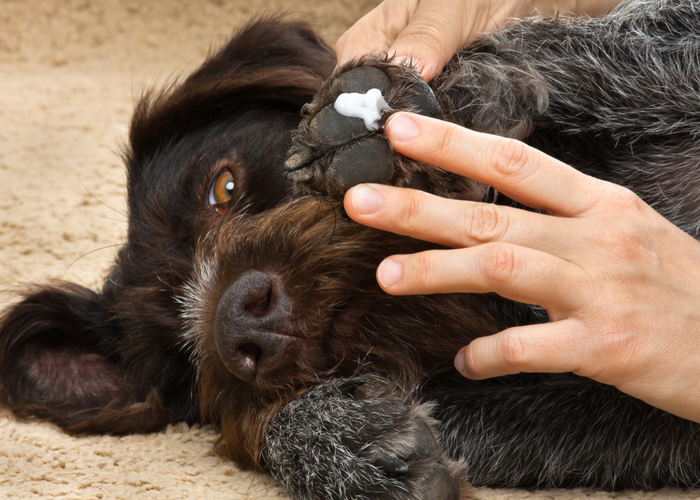
3. Moisturize Dog Paws Before Walking on Hot Pavements
Minor injuries make canines more prone to getting their paws burned, leading to significant problems in the future.
But here's another tip to protect dog paw problems and prevent cuts, burns, and cracks – moisturize your pup's paw every day.
You can find some moisturizing paw rubs or balms from a local pet store.
Remember that you need to apply the paw rub on their feet a few minutes before the walk for best results.
4. Try Using Paw Wax During Hot Weather
Paw wax also offers a layer of protection against rough or hot surfaces and substances like road salts.
You can easily smear it on your fido's paws when you need to walk them through, adding a layer of protection.
It's also available at local pet stores near you.

5. Protect Paws from Hot Pavements With Dog Shoes
If you don't walk outside and on hot pavement barefoot, it's only right to do the same for your pet.
One of the best ways to protect dog paws and feet from burns and injuries is by investing in canine shoes with rubber soles.
Not all dogs like wearing shoes, and it may take time before your fido gets accustomed to walking with shoes.
So, it would be best to get them to wear shoes from a young age to help them adjust early.
However, you have to ensure you get the right size.
If your dog gets used to it, you won't have to worry about hot pavements anymore.
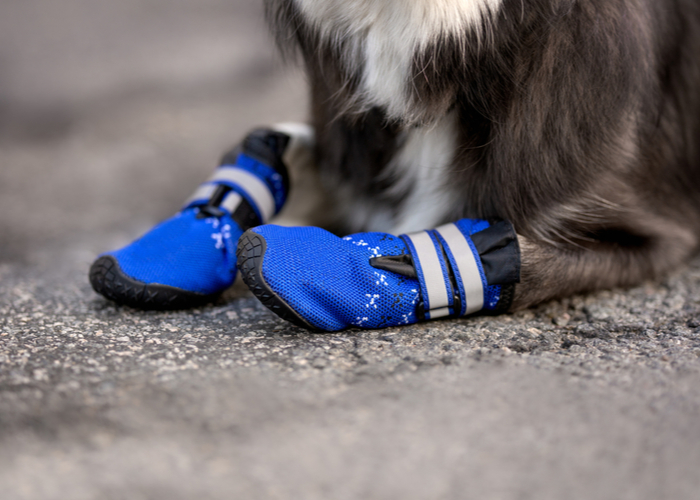
6. Use All-Terrain Dog Boots When Necessary
Is your dog active and athletic and loves running in sand, snow, and even hot pavements?
Then, heavy-duty dog boots are the best for your fido.
You have to take it off, though, whenever you can to help your fido adjust his body temperature by exposing their feet to the air.
And if possible, remove their foot coverings when he's inside your home.
7. Utilize Peel And Stick Pads
The use of peel-and-stick felt pads is a quick way to reduce the dangers of hot pavement.
They're handy and easy to apply to your dog's footpads and protect their paws from any burns and injuries.
They can even help your dog avoid skidding on slick terrain.
Silicone scar pads or tape may be a superior option to felt pads.
You need to cut it to size to put it onto their paws.
What makes them great is they're reusable, and they work well and remain on in damp weather.
These peel-and-stick pads are thin, flexible, and resilient, so they shouldn't cause discomfort to your Fido.

8. Invest in a Fido Stroller To Protect Dog Paws
If you plan to stroll with your Fido in an outdoor event for a long time, getting a dog stroller is an excellent option.
However, these dog strollers are not suitable for all fidos because larger breeds may struggle to fit inside.
Moreover, dog owners will eventually have to walk their pets to ensure they get enough exercise.
On the other hand, strollers are ideal for puppies and tiny dog breeds that may run off and accidentally step on hot pavements.
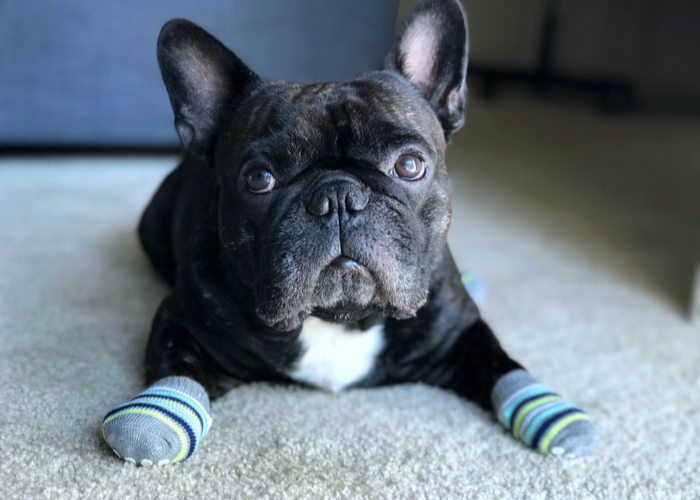
9. Wear Dog Socks As An Alternative to Protect Their Paws
If you badly need to take your dog out, putting on good socks can be an alternative or last-minute solution.
Not all dogs like wearing socks, but it's worth trying. Who knows? Your fido might like it.
However, make sure the socks have rubber or neoprene soles to protect their feet.
It's important to note, though, that sock soles are thinner than shoe soles, and your fido might get tempted to chew them.
Therefore, you have to make the walk short and watch out for your Fido.
10. Toughen Their Paws on Cold Pavements
Cooler times of the day are perfect for a stroll on the pavement because hard and rough surfaces can help toughen their pads.
As a result, they can have a natural resistance to heat and burns in the long run.
Therefore, the next time they step on warm pavement, their feet will not get burnt easily.
11. Consider having dog shoe suspenders
It's not a surprise if your fido won't wear shoes and socks, but there's another solution – a dog shoe or boot suspender.
They don't come with any boots, but if your fido needs protection, these suspenders are worth a try.
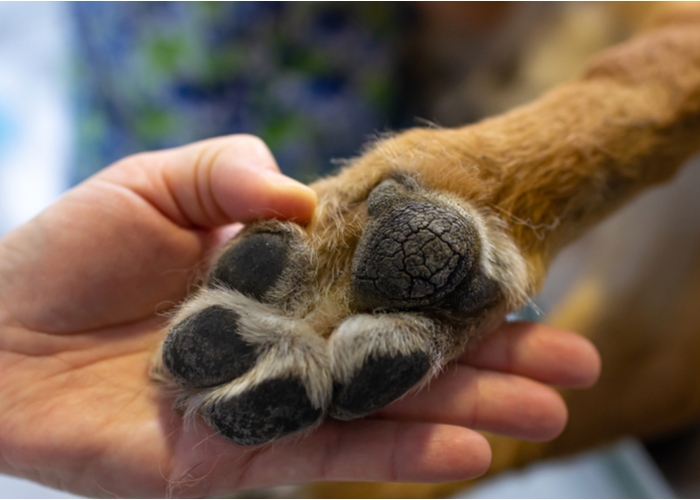
How To Tell If Your Dog's Paws Are Burnt After Walking on a Hot Pavement
The footpads on your dog's paws are usually capable of handling whatever a stroll or walk in the woods throws at them.
However, many human-made surfaces, such as concrete, metal, pavement, sidewalks, and asphalt, can become too hot for dog paws.
But how will you know if your dog is already hurting?
It can be tricky to know since canines have a high pain tolerance.
But the following signs may indicate that heat is already burning their paws.
- Chewing or licking feet
- Limping and excessive tapping
- Paw pads became darker than usual
- The presence of blisters or redness on their paw pads
- Cracks and other damage on their paws
- Pulling their feet when asked to walk on hot pavement
Even if your beloved Fido doesn't show these signs of pain, regularly checking their paws is still necessary.
It doesn't just let you know if your dog's paws are suffering from burns.
This way, you can also diagnose other problems like ingrown nails or infections at an early stage.
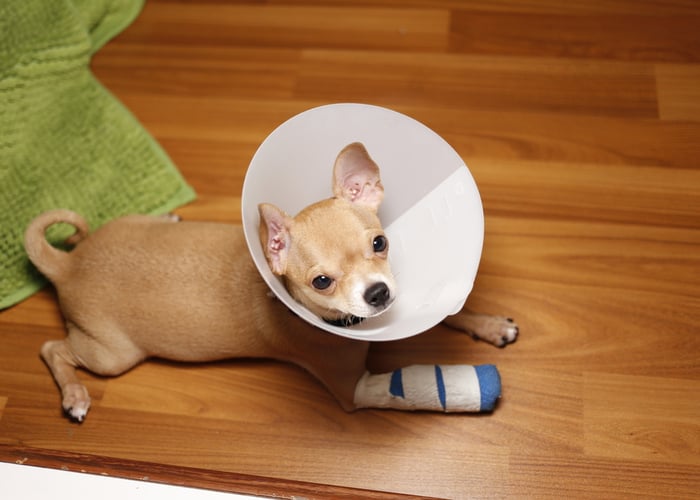
First Aid for Burned Dog Paws Due to Hot Pavement
If you notice the recently mentioned signs of burns, you have to perform first-aid steps to alleviate the pain.
Here are some actionable tips you can implement right away.
Lift your pet and bring them back home
Most fidos with paw burns will struggle to walk back to your home.
So, it'd be best to carry him home to prevent further paw damage and exposure to the hot pavement.
Cool it down with a cold compress
Wash your dog's paws with cold water when you get home.
You may also apply a cold compress to ease the pain, cool down the burn, and reduce or prevent swelling.
Prevent your fido from licking the injured paws
Your dog will try licking or gnawing on the wounded paw, but you have to prevent it at all costs.
If that means putting them on a cone, then so be it.
Restraining him a bit is better than letting his injury get infected.
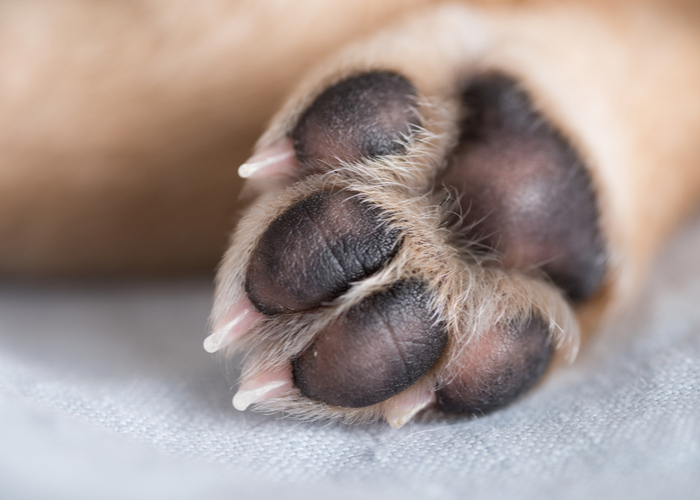
Final Thoughts About Protecting Dog Paws
If you're going to take proper care of your dog's paws when walking on pavements, you can keep it healthy.
The old world saying that an ounce of prevention is better than a pound of cure may be cliche, but it's always true to your fido's paws.
You can treat burns at home, but if it's in a severe stage, you'll need to contact your vet immediately.
It is to ensure that your fido is receiving proper treatment and infection prevention steps.
Depending on the severity of the burn, your dog may require antibiotics or pain medicine.
READ NEXT: How to Clean Dog Paws After a Walk
